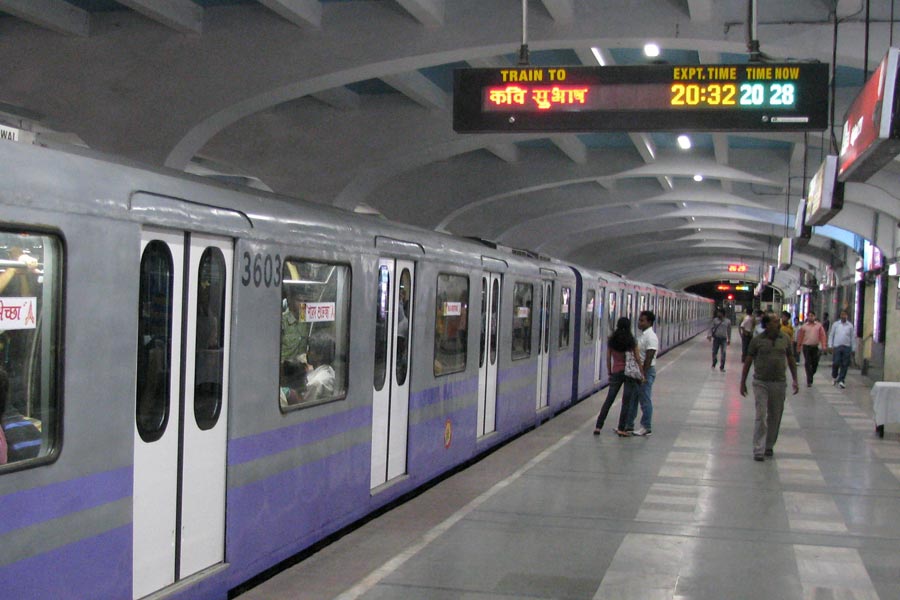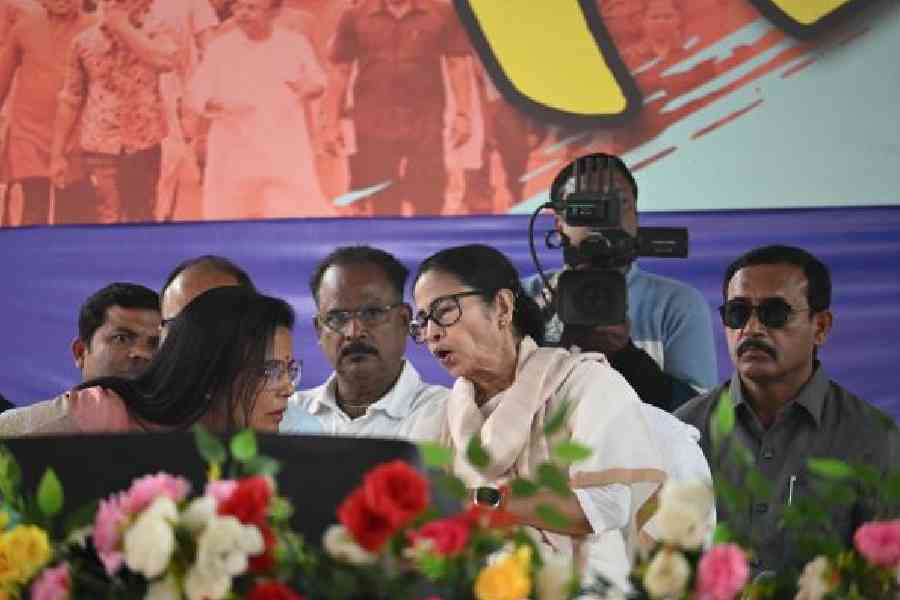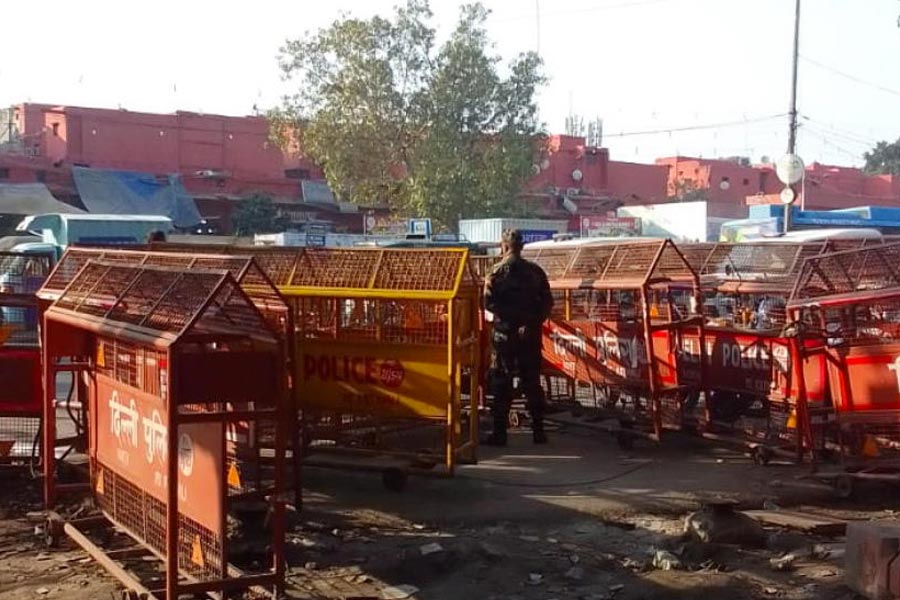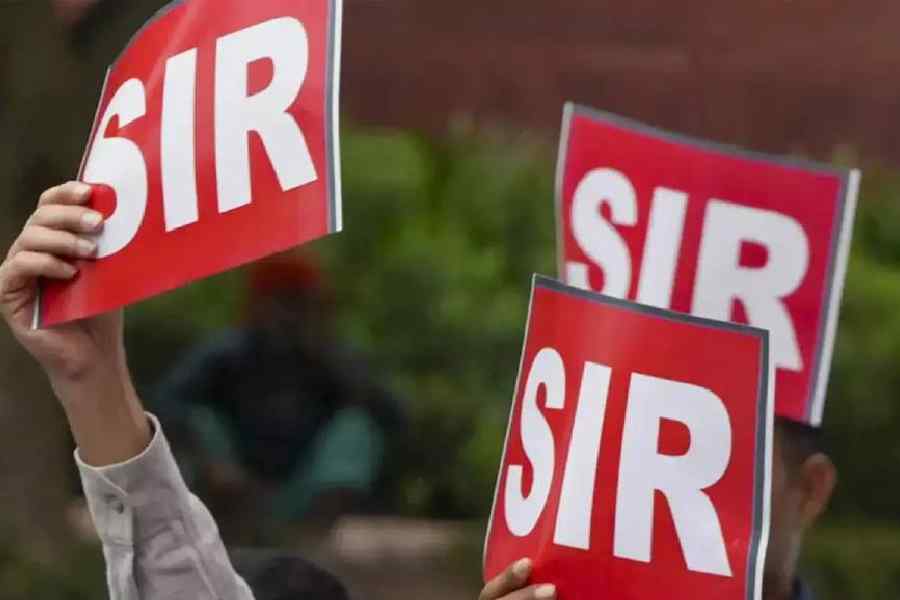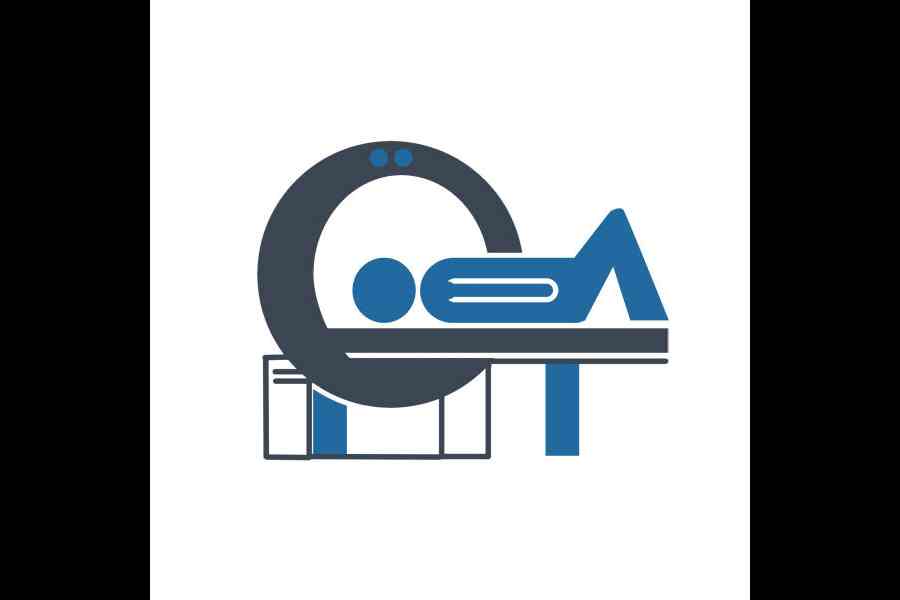India's oldest Metro tunnel will undergo a "complete overhaul", 40 years after it opened.
Overhauling Calcutta Metro Rail's tunnel between Tollygunge and Dum Dum, part of the north-south or Blue Line, could take three to four years, and the job may necessitate stopping train services for periods.
"We have engaged consulting agency Rites to conduct a study on how to overhaul the Metro tunnels between Tollygunge and Dum Dum. This includes the civil structures and tracks," Uday Kumar Reddy, general manager of Metro railway, told The Telegraph.
"The study is going on for five to six months, and we expect a report soon," he said.
Reddy said another agency is also conducting a second study to determine how to add more passenger amenities, such as elevators and escalators, to the old stations.
"The costs are being worked out and, once finalised, we'll send the proposal to the Railway Board," said Reddy.
He said the overhaul was required because the tunnel is 40 years old, and so far, only regular repairs and maintenance work have been done.
"Any structure that is 40 years old needs overhauling," said Reddy.
A retired Metro engineer said he found two major issues during his tenure. "There was the issue of seepage from the tunnel walls, which was addressed. Also, the fittings of the tracks needed to be replaced more frequently, compared to the tracks for the new lines," he said.
According to Reddy, the overhaul work could require stopping services for a considerable period. "These things are being sorted out," he said.
He said an upgrade of the north-south line's signalling system would also be done along with the overhauling.
"This would increase the frequency of trains," said the Metro general manager. Now, the peak hour frequency is six minutes.
Once the connection between Sealdah and Esplanade in the East West or Green Line is complete, the number of passengers at Esplanade station will go up manifold and could cause severe congestion at the hub where three lines, East West, north-south and Joka-BBD Bag routes have interfaces.
"If the frequency of north-south line can be increased, then the passenger dispersal will be easier," he said.
Calcutta Metro is the oldest of the mass rapid transit systems in the country. It completed 40 years in 2024.
The foundation stone for Metro Railway was laid on December 29, 1972. On October 24, 1984, Metro’s first commercial run was between Esplanade and Bhowanipore, a distance of 3.4km.
The 16.45km tunnel between Tollygunge and Dum Dum became operational on September 27, 1995.
It was built with the cut-and-cover method (a tunnel construction technique) using diaphragm walls and sheet piles, said engineers.
Experts said such overhauling and upgrades are necessary, and are being done in all old Metro systems globally.
The London Underground, commissioned in 1863, also undergoes such overhauls at intervals. According to the tube website, the Piccadilly line, part of the London Underground, is being revamped now.
Apart from introducing new trains, the power system on the Piccadilly line will be upgraded.
The accessibility across the line is improved by installing platform humps or manual boarding ramps.
These changes promise to reduce platform-to-train stepping distances and heights, making it easier for commuters to get on and off the trains.
"All station platforms will be reviewed and — where possible — the works will be done before the full new train fleet is in service. Upgraded tracks and trackside equipment to improve the ride quality for a smoother and faster journey," said the website.
For the first time in 50 years, the New York City transit system is set to undergo an overhaul. The mass transportation system of New York started in 1904.
Over the next five years, the Metropolitan Transportation Authority plans to purchase rail cars, upgrade power substations and fortify stations and tracks against extreme weather.

